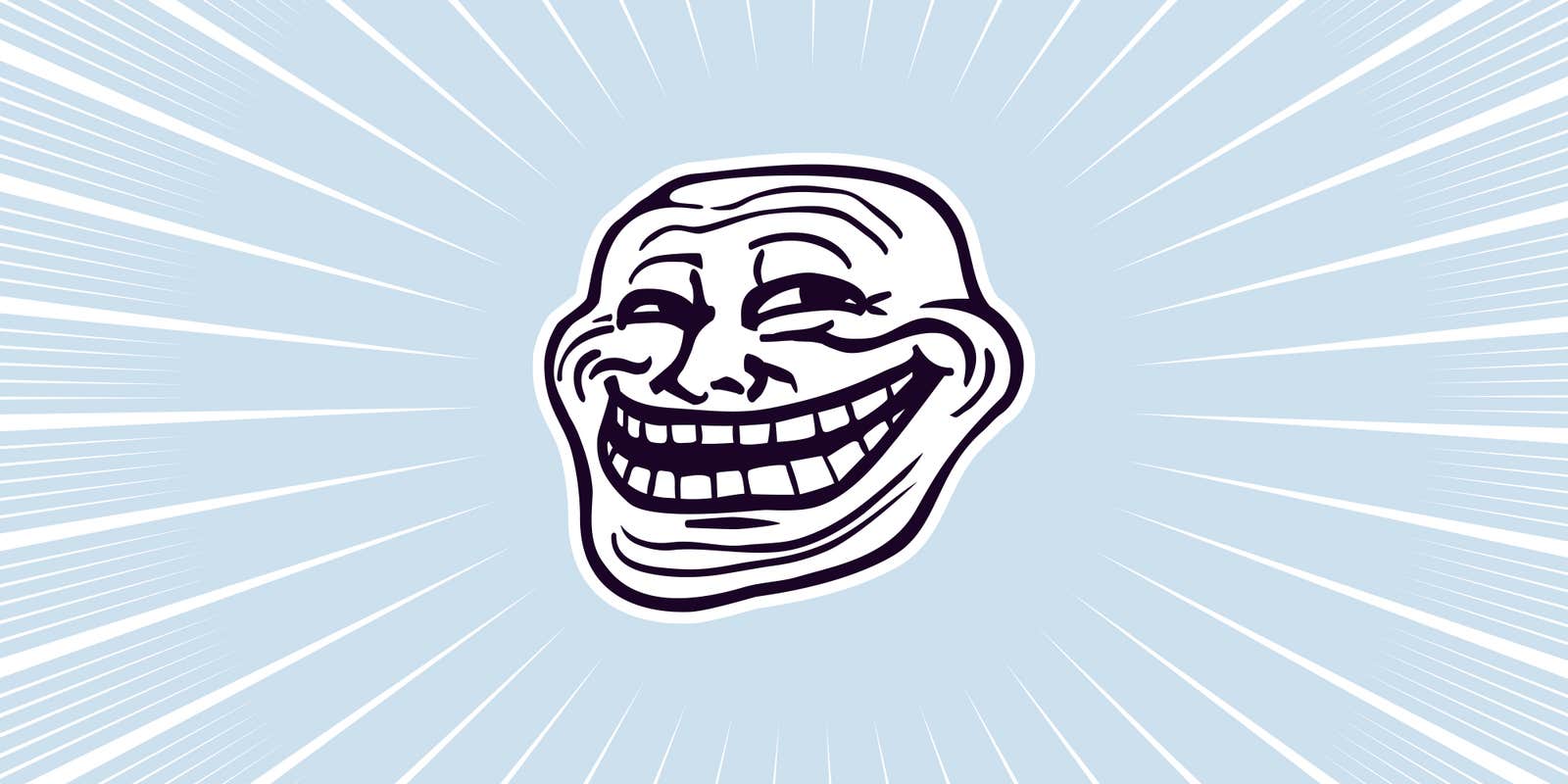Troll Face, with its iconic mischievous grin, has become a staple in meme culture. Symbolizing internet trolling and the playful, often annoying side of online interactions, this rage comic character has evolved from a simple drawing into an emblematic figure in the world of memes.
Origin of Troll Face
Troll Face, or Trollface, was created by Carlos Ramirez, an Oakland-based artist, on September 19th, 2008. Initially drawn as part of a webcomic about the pointless nature of trolling on a 4chan video games board, the image was later uploaded to Ramirez’s DeviantART page. The character’s design, featuring a grin that epitomizes the facial expression of an internet troll, quickly caught the online community’s attention.
I am Whynne, the creator of Trollface. AMA
byu/Whynne inmemes
Spread across platforms
After its introduction on 4chan, Troll Face rapidly gained traction as a versatile character in rage comics. It found a significant following on Reddit, especially within the rage comic community around the /r/f7u12 subreddit.
The meme was also popularized on platforms like Tumblr, Cheezburger, Quickmeme, and Memegenerator. By August 2009, the first Urban Dictionary definition for “trollface” was submitted, further cementing its status in online culture.
Trollface funny
byu/DJ_Grillades inComedyCemetery
Legal battles and copyright issues
In July 2011, controversy arose when Carlos Ramirez claimed copyright infringement over the use of Troll Face on Reddit, leading to a heated exchange with the community. This dispute brought to light the legal complexities surrounding meme culture with Ramirez later leveraging copyright of the character by registering it with the U.S. Copyright Office in 2010, and reportedly earning significant revenue through licensing and settlements from its unauthorized use.
Troll Face in popular media and profitability
Troll Face not only thrived in the digital realm but also permeated popular media. It was featured on various TV shows, games, and football fan banners. Its presence in media, like the “Black Mirror” episode “Shut Up and Dance” and the music video of Rebecca Black’s “Friday” remix, underscored its widespread recognition. Ramirez’s monetization of the character, mainly through licensing deals with retailers like Hot Topic, highlighted the potential profitability of viral internet content.
Trollface Nicky pic.twitter.com/CmdPXgfdVO
— Nicholas 'Nicky' Fretterd • Holly Jolly Month • (@NickyFretterd) December 6, 2023
2020 resurgence and evolution
In recent years, the meme has seen a resurgence. This new wave is reminiscent of the revival of Doge memes, and was marked by the popularity of formats like “Cover Yourself in Oil” and “Trollge.” These adaptations demonstrate the meme’s enduring relevance and ability to evolve with internet culture.
"He was called the thief yet he was the original, he made Twitter as popular yet was bullied on it, they called him a troll yet he was the hero."
— Thes (im legit trollface trust me bro) (@ThesGoesMental) December 12, 2023
– Tales that have been told about Thes pic.twitter.com/MuxcAlEhKq
The impact and legacy of Troll Face
Described as “the father of memes” by some, Troll Face’s impact extends beyond its humor. It represents a significant development in internet culture where a simple drawing can become a symbol with a global reach. Its inclusion in exhibitions like the one at Museo del Meme in Mexico City and its use in protests and viral videos further illustrate its cultural significance.
The enduring popularity of Troll Face
Troll Face remains a testament to the creativity and humor of online communities. From its humble beginnings on DeviantART and 4chan to its status as a renowned internet icon, the comic character exemplifies the dynamic nature of memes and their ability to capture the essence of online interactions. As new memes emerge and evolve, Troll Face remains a classic example of internet humor’s enduring appeal and impact.

